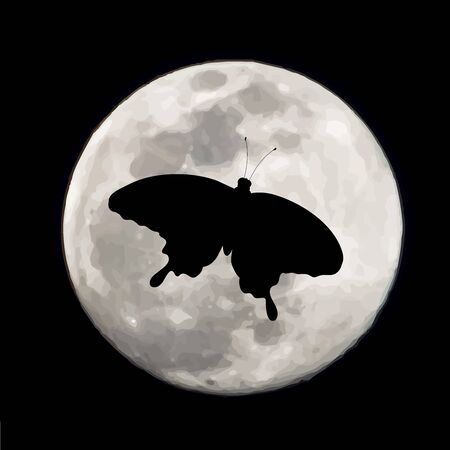Into the UK Wilderness After Dusk
As the last traces of daylight fade and a silvery mist creeps across the land, Britain’s untamed corners begin to pulse with hidden life. For those daring enough to step beyond the familiar glow of streetlamps, the country offers a world transformed—hedgerows whispering with unseen activity, ancient woodlands holding secrets beneath their tangled canopies, wild moors echoing with the calls of elusive creatures, and even city parks morphing into after-dark sanctuaries. This is not your typical countryside ramble; it’s an adventure into the shadowy side of nature, where every rustle and fleeting shadow hints at a nocturnal drama unfolding. Armed with nothing but binoculars and a thirst for discovery, you’ll witness Britain’s landscapes shifting into vibrant theatres of night-time wildlife. Here, under starlit skies and cloaked in moonlight, a new breed of explorer is born—one who seeks out the thrill and mystery that only the UK wilderness after dusk can deliver.
Essential Kit for After-Hours Nature Watching
When you’re gearing up for a nocturnal adventure across the wild and windswept corners of the British Isles, having the right kit isn’t just a luxury – it’s your passport to discovery. Night-time nature watching isn’t for the faint-hearted, and every seasoned rambler knows that preparation is half the battle won. Here’s what you’ll need to stay one step ahead when the sun dips below the horizon.
Binoculars: Your Window into the Night
The heart of any after-dark wildlife escapade is a reliable pair of binoculars. For British nights, choose models with a wide objective lens (at least 42mm) for maximum light gathering. Roof prism designs are compact and hardy – perfect for scrambling over dew-soaked heathland or ducking under ancient oaks. Don’t skimp on weatherproofing; British drizzle waits for no one.
Torches: Illuminating the Unknown
A trusty torch is your lifeline out in the dark, but not all beams are equal. Go for LED torches with adjustable brightness, so you can scan hedgerows without blinding badgers or dazzling deer. A red filter helps preserve your night vision and keeps nocturnal creatures at ease. Head torches free up your hands, letting you clamber stiles or jot down field notes at a moment’s notice.
Recommended Night-Viewing Gear
| Item | Top Tip | Why It Matters |
|---|---|---|
| Binoculars (8×42 or 10×50) | Choose waterproof & fog-proof models | Crisp views even in classic British mist |
| LED Torch/Head Torch | Carry spare batteries & use a red filter if possible | Safe navigation & unobtrusive viewing |
| Sturdy Boots or Wellies | Opt for ankle support and grippy soles | Mud, bogs, and rocky paths are par for the course |
| Thermal Flask | Brew up some strong tea to ward off the chill | Keeps spirits high during long vigils |
| Pocket Field Guide & Notebook | Laminated pages resist rain; pencils never run out of ink! | Record sightings before they slip away with the dawn mist |
Treading Carefully: Footwear & Clothing Choices
Navigating sodden moors or tangled woodlands after dusk demands footwear that’s both robust and comfortable. In the UK, wellies are legendary – but don’t overlook hiking boots with solid grip, especially if you’re tackling hilly ground. Dress in layers; British weather is fickle, and you’ll want to shed or add as you go. A waterproof outer shell is non-negotiable when squalls blow in from nowhere.
Final Prep: Pack Smart, Move Quietly
Your rucksack should be light but loaded with essentials: snacks (think oat bars or a slab of Kendal mint cake), a map (old-school Ordnance Survey never fails), and maybe even a lightweight sit mat for those patient stakeouts by moonlit ponds. Silence is your ally; wrap kit in soft cloth to avoid tell-tale clinks and always tread softly – Britain’s secretive night-life rewards only those who come prepared and move like shadows themselves.

3. Britain’s Nocturnal Residents: Who Comes Out at Night
As dusk falls and the last embers of sunlight slip behind the hedgerows, the British countryside transforms into a stage for its most daring performers. For those bold enough to venture out with binoculars in hand, night-time unveils a secret world teeming with life that rarely graces the daylight hours. Here’s an adrenaline-fuelled dive into some of the UK’s most iconic nocturnal residents—each one a legend of the after-dark landscape.
Badgers: The Striped Night Engineers
The British badger, stocky and striped like a rogue bandit, is a true titan of the twilight hours. Emerging from labyrinthine setts with military precision, these creatures are famed for their social structure and relentless digging prowess. To spot one is to witness a living piece of British folklore, especially as they shuffle through moonlit fields in search of earthworms and beetles.
Owls: Ghosts on Silent Wings
Float through ancient woods or across open meadows and you may catch the silent swoop of a barn owl or tawny owl. These feathered phantoms rule Britain’s nocturnal skies, their haunting calls echoing down country lanes. With razor-sharp talons and uncanny night vision, owls embody the thrill of midnight wildlife watching—a flash of white under torchlight, then gone like a dream.
Foxes: Urban Shadows and Countryside Tricksters
No list would be complete without the fox—the ultimate British survivor. Red-furred and bushy-tailed, foxes prowl city streets and rural byways alike, adapting with cunning to every environment. Their yelps and barks pierce the dark, while their eyes glint like amber jewels in your binoculars’ beam.
Bats: The Aerial Acrobats
Britain’s bats bring high-octane action to the night sky. Pipistrelles zip between trees at breakneck speed, feasting on midges with sonar-guided precision. Watching these tiny mammals perform aerial stunts overhead is nothing short of exhilarating—proof that nature’s daredevils are sometimes no bigger than your thumb.
Hedgehogs: The Prickly Ramblers
The humble hedgehog might be small but is mighty in spirit, snuffling through gardens and woodlands alike. Their nocturnal forays make them beloved by night-watchers lucky enough to cross paths with their spiky silhouettes—an unmistakable emblem of Britain’s wild heart.
The Elusive Nightjar: Phantom of the Heath
If you’re truly adventurous, seek out the nightjar—a bird so cryptic it blends perfectly with heathland shadows. Its churring song is more often heard than seen, adding an eerie soundtrack to any nocturnal expedition. Spotting one requires patience, luck, and nerves of steel.
An Unrivalled Tapestry of Nightlife
Each encounter with these night-dwellers is a brush with the wild unknown; uniquely British characters that thrive when most are asleep. Armed with binoculars and curiosity, venturing into this hidden realm transforms any ordinary evening into an epic adventure worthy of legends.
4. Fieldcraft for the Night Watcher
Embarking on a nocturnal wildlife adventure across the British countryside isn’t just about having a decent pair of binoculars—it’s about mastering the timeless art of fieldcraft. To truly blend in and become part of the night, you’ll need more than just enthusiasm; you’ll need stealth, keen observation, and a healthy dose of British grit. Here are some hard-earned tips and tricks to transform your evening ramble into a genuine wildlife stakeout.
Moving Silently: The Art of the Quiet Approach
Treading quietly is an essential skill for any night watcher. Start by planning your route—stick to soft earth or grass where possible, as gravel and dry twigs will betray even the most careful step. Keep your weight centred and roll your foot from heel to toe, pausing between steps to listen for movement in the undergrowth. In classic British style, patience is your secret weapon; resist the urge to rush, and let your senses tune in to the night’s subtle sounds.
Blending with Your Surroundings
Even after dusk, creatures can spot an out-of-place shape or catch a whiff of human scent. Wear muted, natural colours—think olive greens, browns, and dark blues—to break up your outline against hedgerows or woodland edges. Avoid anything too shiny or reflective; even a glint from a watch face can give you away under torchlight or moonshine. Remember, wind direction matters: approach with the breeze in your face so animals don’t catch your scent before you see them.
Reading Signs in Low Light
The best night watchers develop an eye for detail even when visibility is low. Here’s a quick comparison of signs you might encounter:
| Sign | Description | What to Look For |
|---|---|---|
| Mammal Tracks | Footprints left in mud or soft soil | Badger claw marks, fox pads, deer slots |
| Droppings (Scat) | Animal faeces indicating recent activity | Rabbit pellets on lawns, otter spraints near streams |
| Nibbled Vegetation | Plants chewed by nocturnal feeders | Ragged leaf edges from hares or deer, stripped bark on saplings |
| Nocturnal Calls | Sounds echoing through the dark | Tawny owl hoots, vixen screams, hedgehog snuffles |
Bonus Tips from Seasoned Spotters
- Avoid using bright torches—opt for red filters which disturb wildlife less and preserve your night vision.
- Crouch low if you hear movement; sometimes patience brings animals closer than you’d dare hope.
- If using binoculars at night, let your eyes adjust for 10–15 minutes before peering into shadowy corners—you’ll be amazed at what emerges from the gloom.
- Keep notes—British spotters love jotting down sightings in battered notebooks. Over time, you’ll build a personal map of local hotspots and animal routines.
The Final Word on Fieldcraft
The wild British night rewards those who respect its quiet drama. By moving silently, blending in like a shadow among nettles and brambles, and deciphering subtle signs along age-old hedgerows, you’ll unlock encounters that most folk only dream about. With binoculars in hand and fieldcraft in mind, every night becomes an adventure worthy of retelling over morning tea.
Urban Jungle: Unexpected Wildlife in British Cities
Who’d have thought that the city’s heartbeat pulses with as much wildness after dark as any remote woodland? Armed with nothing more than a sturdy pair of binoculars and an adventurous spirit, urban explorers can uncover a nocturnal world thriving right on their doorstep. London, Manchester, Edinburgh—beneath the sodium glow of streetlamps and between brick and concrete, creatures of the night stage their secret dramas. Foxes slink through back gardens, hedgehogs snuffle along fence lines, and bats flit above city parks, chasing midges in aerial ballet. The urban jungle isn’t silent; it’s humming with life if you dare to look for it.
Surprising Encounters in Familiar Spaces
Forget escaping to the countryside—the real adventure might be in your own neighbourhood. In Hackney or Glasgow’s West End, residents have spotted tawny owls perched atop lamp posts and badgers making midnight raids on compost bins. It’s not unusual to glimpse the glint of a fox’s eyes from behind garden sheds or to catch a fleeting silhouette of a pipistrelle bat darting above canal towpaths. With binoculars pressed to your eyes and a head-torch at hand, ordinary spaces transform into wild frontiers.
How to Join the Urban Night-Time Safari
You don’t need a 4×4 or hiking boots—just curiosity and respect for your wild neighbours. Choose quiet hours when city hustle fades, and seek out green corridors: parks like Hampstead Heath or Glasgow Green, riversides, even communal gardens. Move softly; urban wildlife is wary but not absent. Binoculars help you observe from a respectful distance without startling fox cubs or nesting birds.
Top Tips for City Dwellers
1. Scout out local wildlife groups—many host guided night walks.
2. Keep your torch beam low and use red filters to avoid dazzling animals.
3. Log your sightings on citizen science apps; every hedgehog or owl helps track urban biodiversity.
4. Share your discoveries—nothing beats swapping tales of midnight encounters with neighbours over a cuppa.
Exploring the city’s nocturnal side is a true adventure—a chance to connect with nature without ever leaving home, proving that the wild isn’t always elsewhere; sometimes it’s just beyond your doorstep, waiting for nightfall and a keen set of eyes.
6. Responsible Night-time Adventuring
Setting out on a nocturnal safari through the British countryside is nothing short of exhilarating, but with great adventure comes great responsibility. The UK’s wild spaces are precious, and our after-dark explorations must tread lightly—both for the sake of wildlife and the land itself. Following best British practice means minimising disturbance to creatures of the night and showing utmost respect to the rolling moors, ancient woodlands, and hedgerows we traverse. Keep torches and spotlights on low intensity, using red filters when possible to avoid startling animals’ sensitive eyes. Stick religiously to public footpaths and bridleways; straying off can damage fragile habitats and breach the Countryside Code. Silence is golden—whisper if you must speak, and muffle your footsteps as you move. Never pursue or crowd an animal: observe from a respectful distance through your binoculars and let their natural behaviour unfold undisturbed. Pack out all litter, leave gates as you found them, and resist the urge to collect souvenirs from the wild. By championing these time-honoured principles, every night-time encounter becomes not only an adventure, but a tribute to Britain’s rich natural heritage—a legacy for future thrill-seekers under moonlit skies.
7. Tales from the Night: Memorable UK Wildlife Encounters
There’s something deliciously defiant about stalking through a dew-damp woodland at midnight, binoculars in hand, heart pounding with anticipation. For many of Britain’s most daring night-watchers, it’s not just about spotting wildlife—it’s about forging stories that will be retold for years around the campfire or pub table. These are their tales: raw, electric, and laced with the spirit of British adventure.
Foxes in the Fog: A Londoner’s Urban Safari
Take seasoned urban explorer Dave from East London—his first encounter with a bold city fox was nothing short of cinematic. “There I was, crouched behind a bin in Hackney Marshes, torch clipped to my cap,” he recalls. “Out of the fog came this vixen, eyes aglow in my binocular lens. For a split second, we both froze—then she sauntered off like she owned the place. Proper urban royalty.”
The Highland Stag Stand-Off
Up north, intrepid hiker Isla braved the biting Scottish wind for a glimpse of red deer on the Cairngorm slopes. “You don’t know cold until you’re tucked behind a boulder at 2am,” she laughs. “But then—a massive stag emerged under moonlight, antlers silhouetted against the stars. It felt like I’d stumbled into an ancient legend.”
Owls Over Oxfordshire: Eerie Calls and Silent Wings
For bird enthusiast Tom, it was all about patience and perseverance. “Barn owls aren’t known for giving interviews,” he jokes. “But one night near Abingdon, after hours of listening to their haunting calls, one glided so close I could see every feather through my glasses.” That fleeting moment became his badge of honour—a reward for stubborn British tenacity.
Adventures Shared, Legends Born
No two night-time nature encounters are ever quite alike; each is stamped with its own flavour of challenge and triumph. Whether you’re navigating Cornish hedgerows or scaling Lake District fells by torchlight, these stories prove one thing: Britain’s wild nights belong to those bold enough to embrace the unknown. So grab your binoculars and head out—your own legendary tale awaits beneath the UK’s starlit skies.


